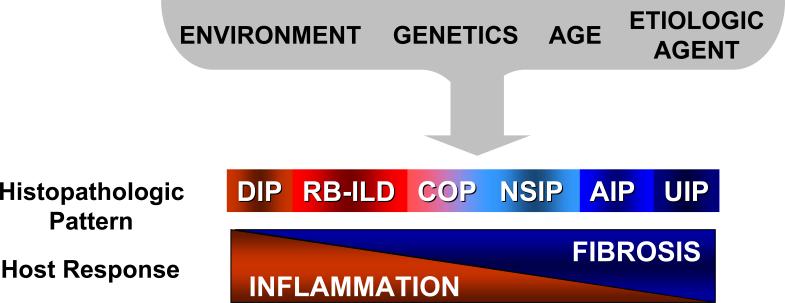Figure 1.
Idiopathic interstitial pneumonias (IIPs) represent an overlapping spectrum of inflammatory and fibrotic tissue reactions or histopathologic patterns in response to an “unknown” injury. At one end of the spectrum are IIPs marked predominantly by diffuse inflammatory cell infiltration; these IIPs tend to be more responsive to anti-inflammatory and immunosuppressive drug therapy. At the other end of the spectrum are IIPs characterized by fibrosis with minimal inflammation; these disease processes tend to have poor responses to currently available pharmacologic agents. Host factors (such as age and genetic polymorphisms) in combination with environmental factors (such as exposure to infectious agents and cigarette smoke) likely determine the resulting histopathological reaction patterns. DIP, desquamative interstitial pneumonia; RB-ILD, respiratory bronchiolitis associated-interstitial lung disease; COP, cryptogenic organizing pneumonia; NSIP, non-specific interstitial pneumonia; AIP, acute interstitial pneumonia; UIP, usual interstitial pneumonia.

